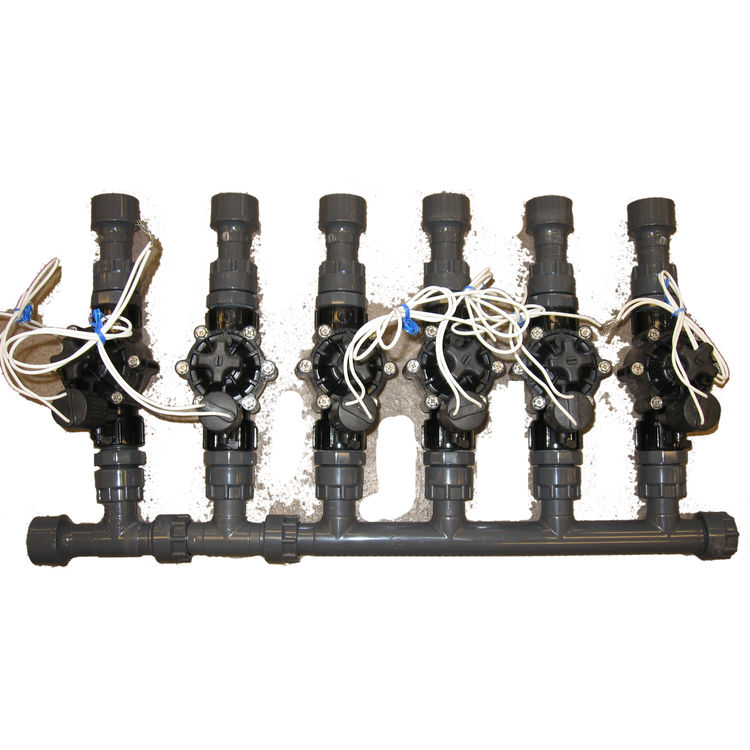

Smaller valve boxes can get hidden under turf and can be difficult to locate for maintenance or repair.Usually longer runs of wire to reach all the valves.Easy to repair or replace the valve in the working space.Less lateral pipe is needed, which reduces pressure loss due to friction and allows optimum hydraulic locations in system.Smaller valve boxes are less obtrusive in the landscape.The outlet valve side connects to lateral pipes running to a specific zone. The inlet side of each valve connects to the manifold, and is under continual pressure from the main line so that water can flow when the valve is opened.

#SPRINKLER MANIFOLD INSTALL#
With grouped valves, one side of the manifold is connected to the main line, and the other side can be connected to piping that continues to other manifolds, be capped off, or be used to install an automatic drain. Lateral lines are only under pressure when the water is passing through an open valve. The outlet side of the valve connects to the lateral lines that carry water to the sprinklers. The inlet is under constant pressure, and only lets water pass through when opened by the controller. Arrows on both sides of the valve show the correct flow direction when hooked up to the water supply.įor single valves, the inlet side connects to the main line. When the controller sends a signal to the solenoid, it either opens or closes the valve. They consist of the solenoid (black cylinder with wires), which is wired directly to the controller, and the valve itself. The kind of valves usually found in automatic irrigation systems are called solenoid valves. You also don’t want them in the middle of play areas or where they interfere with walking. Don’t locate them near stairwells, utilities, window wells, or in areas that slope downward to the house. Grouped valves should also be protected by a valve box, and not buried directly in the ground. front and backyard), and in an accessible spot for maintenance. It’s recommended that you place valve manifold assemblies near the zones they’re serving (e.g. Sometimes a number of manifolds are joined together with pvc pipe to keep them all in one location.

Homeowners can also design and assemble their own manifolds, basically using pvc (polyvinyl chloride) pipe, tees, and elbows. 2-6 valves), depending on how many valves and zones are needed. You can purchase pre-made manifolds in many different sizes (e.g. The downside of manifolds is that if one of the valves starts to leak at the inlet, you have to replace not just the faulty valve but all of the valves, even the ones that are operating properly. An irrigation manifold is a pipe that branches into a number of openings, and each opening is used to attach a single valve that controls one zone. This arrangement reduces the required pipe size, and balances pressure losses throughout the circuit.Ī second method of setting up inline valves is to group them together in a manifold. Much better is a split-length lateral circuit route with the valve located in the center of the sprinkler line. For example, the straight line lateral circuit, with the valve located at the very end of the line, is the least optimum layout. The single valves, along with the lateral pipes, can be laid out in different configurations for optimum sprinkler performance. The buried valve should be covered with a valve box to protect it from dirt, the elements, vandalism, and damage due to mowers and other equipment. Each valve is connected to the main line, with the lateral pipes located downstream from it. Single inline valves are separately placed to control the flow of water through lateral pipes for a specific zone. They can be arranged either singly throughout the system, or located together. They’re the link between the controller and the sprinklers, and they control when water flows into a zone. Inline valves are an important part of any irrigation system.


 0 kommentar(er)
0 kommentar(er)
